NYC’s Forgotten ‘War on Christmas Trees’
Discover how an obscure holiday crackdown affects festive street vendors today!


By the end of his life, Nikola Tesla was seen by many as a mad scientist. Despite his early groundbreaking success with inventions that enabled the generation and transmission of AC power — the system of electricity still widely used today — his later experiments and theories were considered fantastical. Tesla died penniless and alone in the New Yorker Hotel in 1943, and for the rest of the twentieth century, America let his legacy fade into obscurity. However, in recent years, the switch has flipped.
Today, thanks in part to Elon Musk’s luxury electric car brand, Tesla is a household name. Tesla is featured more prominently in history and popular culture, and more people are learning about his scientific contributions. In July 2018, we visited the Tesla Birthday Expo hosted at Wardenclyffe, his former lab in Shoreham, Long Island. It was an occasion to mark the 162nd birthday of the Serbian-American scientist and inventor, and there was a lot to celebrate.
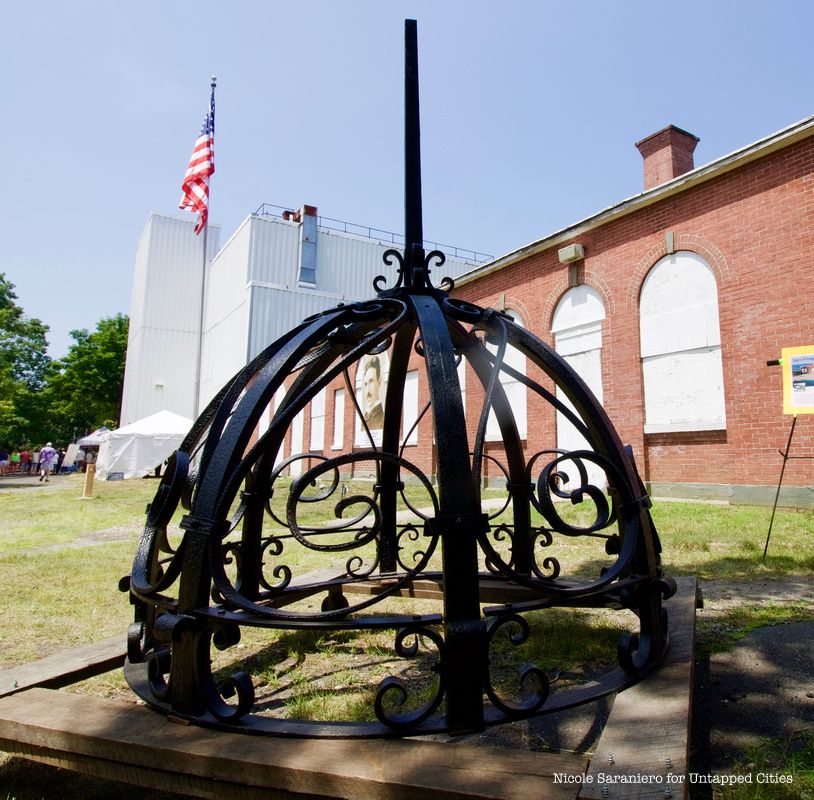
One of the most exciting accomplishments of The Tesla Science Center at Wardenclyffe or Friends of Science East, Inc., the not-for-profit organization striving to develop a regional science and technology center at the site, was getting Wardenclyffe named to the New York State Register of Historic Places and nominated for the National Register. The site received 9,500 endorsements from individuals, organizations, and public officials from around the world within just one week. In Serbia, Tesla is remembered by many monuments, an eponymous airport, and a museum where his ashes are kept, but Wardenclyffe is the only remaining Tesla laboratory in the world.
Wardenclyffe sits on the last undeveloped sixteen acres of the original 200-acre plot of rocky farmland that Tesla bought from James Warden to build his lab on in 1901. Tesla enlisted the help of his personal friend and renowned architect Stanford White to design the building. White also designed the giant tower that would become the symbol of the site and the wrought iron chimney cap, which was restored and unveiled at the birthday expo.
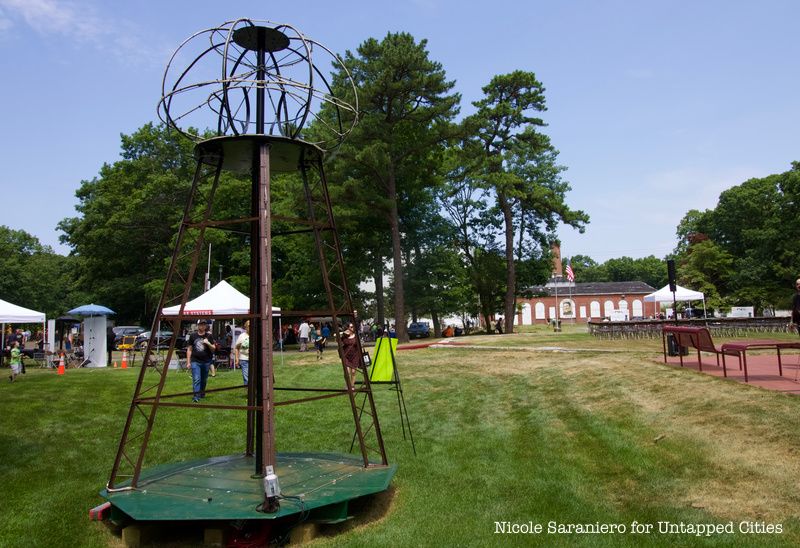
Inside the laboratory at Wardenclyffe, there were three sections. Three is a number that Tesla was particularly fond of and would become obsessed with later in life. The center of the lab was the main workshop that was surrounded by a balcony from which one could look down and observe the work being done. After Tesla left the lab, subsequent owners of the property attached various types of commercial buildings to the structure designed by White. The facade visible today is actually the back of the building, as the front is blocked by another structure, but since White’s design for the lab was symmetrical, both sides are the same. Friends of Science East, Inc. recently freed the eastern side of the building, which had been blocked by a commercial structure for over sixty years. The organization also hired an architectural firm that specializes in historic restorations to determine what is left of Tesla’s original laboratory and what was added by subsequent tenants. The public is not yet allowed inside due to mold.
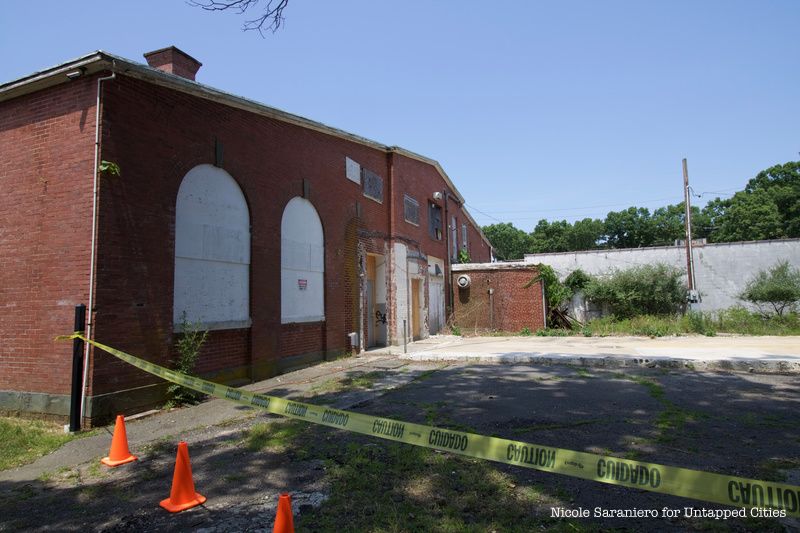
Tesla would ride the train east from New York City, where he was living at the Waldorf Astoria, everyday on a special line that took him and his heavy equipment to the Wardenclyffe. There Tesla worked on what could have been his biggest breakthrough, a worldwide web of free wireless power. To achieve this lofty goal, Tesla had White design a giant transmission tower. The tower stood 187 feet, or 18 stories high and was rooted 120 feet deep in the ground. At the time, it was the tallest structure on Long Island. The 55-ton steel hemispherical structure at the top had a diameter of 68 feet. On a tour led by the Telsa Science Center at Wardenclyffe president Jane Alcorn, she told the group that in the winter local teenagers would climb the tower to ice skate on frozen water that collected on the tower’s platform!
Tesla described his vision for the possibilities of his wireless network in a 1908 article for Wireless Telegraphy and Telephony:
“As soon as completed, it will be possible for a business man in New York to dictate instructions, and have them instantly appear in type at his office in London or elsewhere. He will be able to call up, from his desk, and talk to any telephone subscriber on the globe, without any change whatever in the existing equipment. An inexpensive instrument, not bigger than a watch, will enable its bearer to hear anywhere, on sea or land, music or song, the speech of a political leader, the address of an eminent man of science, or the sermon of an eloquent clergyman, delivered in some other place, however distant.”
Sounds a lot like the phones we all carry today! Tesla fervently believed that what he saw as the future of wireless technology was “not a dream” but a “simple feat of scientific electrical engineering, only expensive,” as he described it in 1905. Were he successful in his execution, Tesla could have ushered in the information age nearly 100 years earlier.

Unfortunately, the expense proved to be the crux of the matter. A characteristic often noted about Tesla is that he was a great scientist but a terrible businessman. As mentioned on our tour of the Woolworth Building, Tesla had an office in the building but was kicked out after only a few months for failure to pay his rent. When news of Italian scientist Guglielmo Marconi’s successful transmission of a signal from England to Newfoundland reached Tesla, he ramped up his plans for Wardenclyffe. These pricier plans wound up costing more than the $150,000 J.P. Morgan had agreed to front. When Morgan denied additional funding, Tesla went ahead with the plans anyway.
For years, Tesla lived at the Waldorf on credit thanks to his most generous financier, John Jacob Astor, but when Astor died in 1912 and new management took over the hotel, they wanted Tesla to pay up. On July 4, 1917, the year after Tesla declared bankruptcy, his unfinished tower at Wardenclyffe was dynamited and razed to help pay debts. All that is left of the tower today is a concrete outline of the massive base.
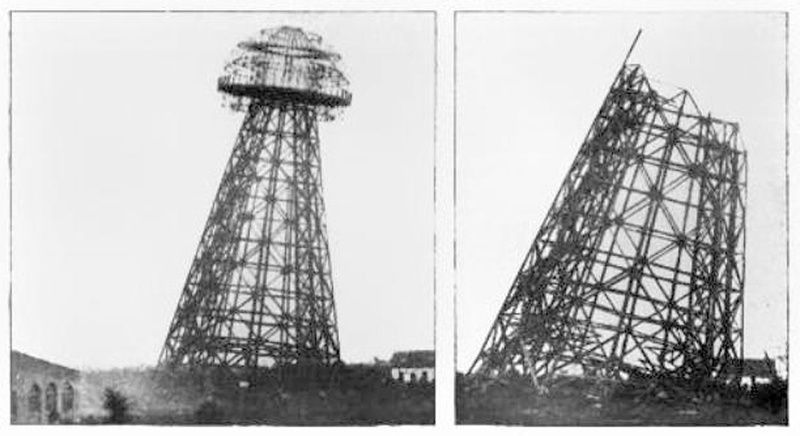 The demolition of Tesla’s transmission tower in 1917. Photo from Wikimedia Commons.
The demolition of Tesla’s transmission tower in 1917. Photo from Wikimedia Commons.
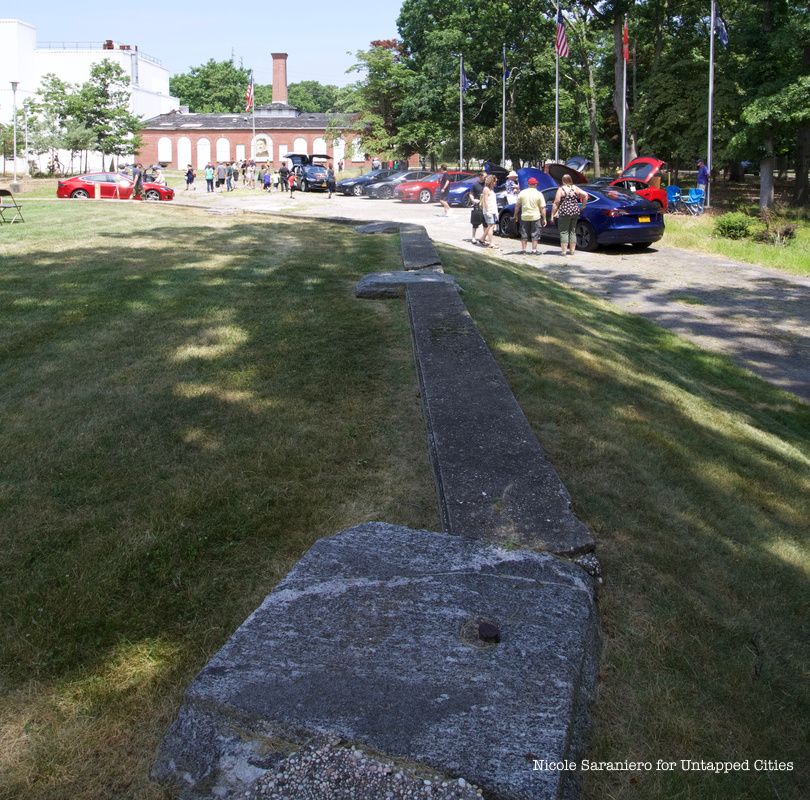
For decades, a mystery has persisted as to what may lie beneath the base of Tesla’s tower. Many believed that below the surface there is a maze of hidden tunnels and chambers. At the Tesla Birthday Expo, Alcorn revealed findings from a ground-penetrating radar scan conducted by The Tesla Files, a reality show on the History Channel that visited the site. After disclaiming that much of reality television is not in fact reality, Alcorn admitted that this finding was exciting and more accurate than inconclusive tests that had been conducted at the site by previous shoots.
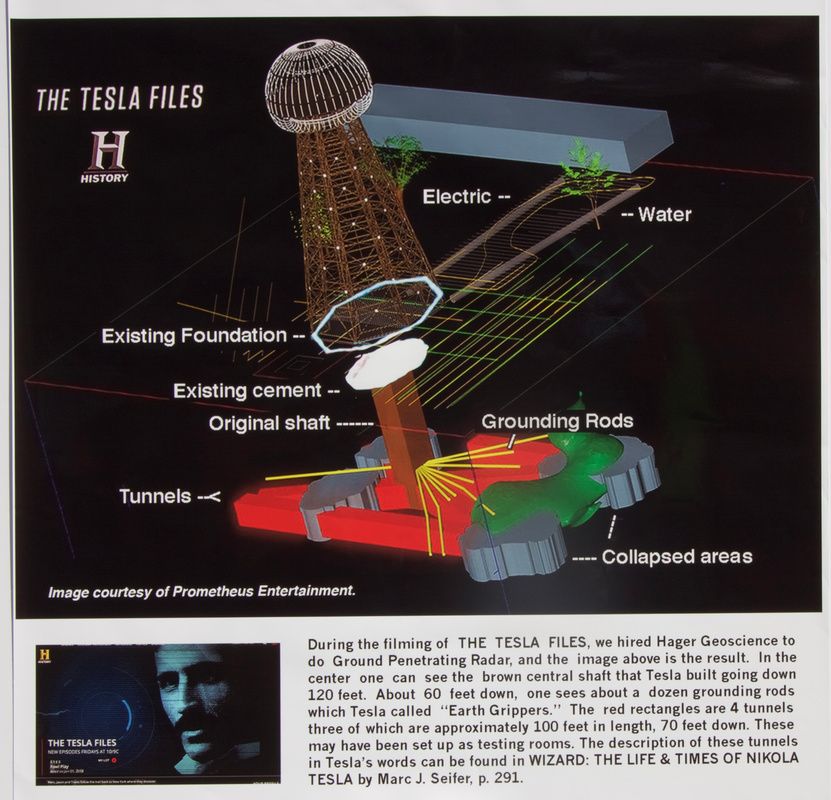
After Tesla left Wardenclyffe, the Peerless Photo Company, a manufacturer of emulsions for photographic film and paper, purchased the property and constructed additional buildings. In 1969, the property was taken over by Agfa-Gevaert, Inc., at that time a division of the Bayer Corporation. After the facility stopped manufacturing in 1987, all structures remained dormant and faced demolition. The Tesla Science Center at Wardenclyffe or Friends of Science East, Inc. (TSCW) was able to purchase the property in 2013 thanks to a very successful collaboration with internet cartoonist Matt Inman in August 2012 that raised $1.37 million.
Since then, the center has received sizable donations from Elon Musk and inventor and entrepreneur Greg Olsen (who was the keynote speaker at the birthday expo) to help turn the lab into not only a museum, but also a center for people to learn about and engage with science and technology. Wardenclyffe is currently lending space to a solar mapping project being conducted by Brookhaven Lab to determine how to maximize solar energy on Long Island, and hopes to make sustainability a key feature of the new center. Other goals for the site are to create a maker space and entrepreneurial accelerator to support burgeoning inventors and scientists better than Tesla was, and to foster the spark of inspiration ignited by his work.
Most recently, TSCW announced that construction on a visitors center is scheduled to begin inthe summer of 2025, with a tentative opening in early 2026.
Check out more photos from the NEON 2018 Tesla Birthday Expo and keep up to date with the site’s development on social media and the Tesla Science Center at Wardenclyffe website.
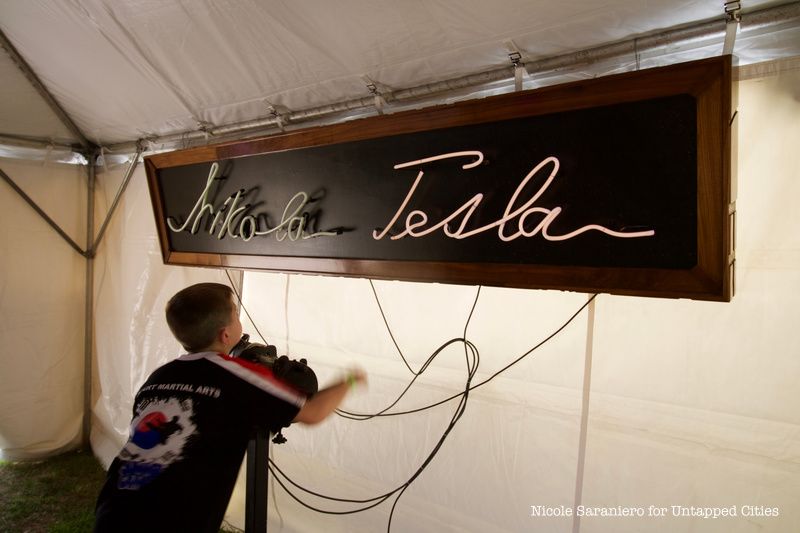
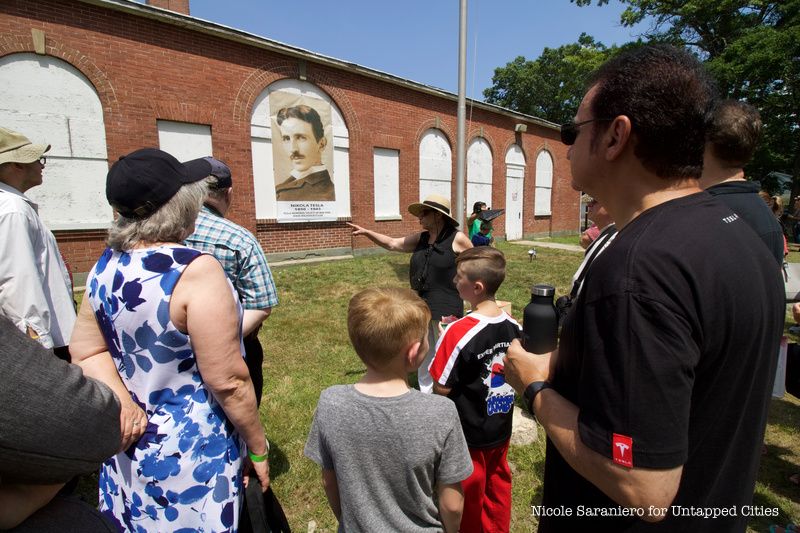
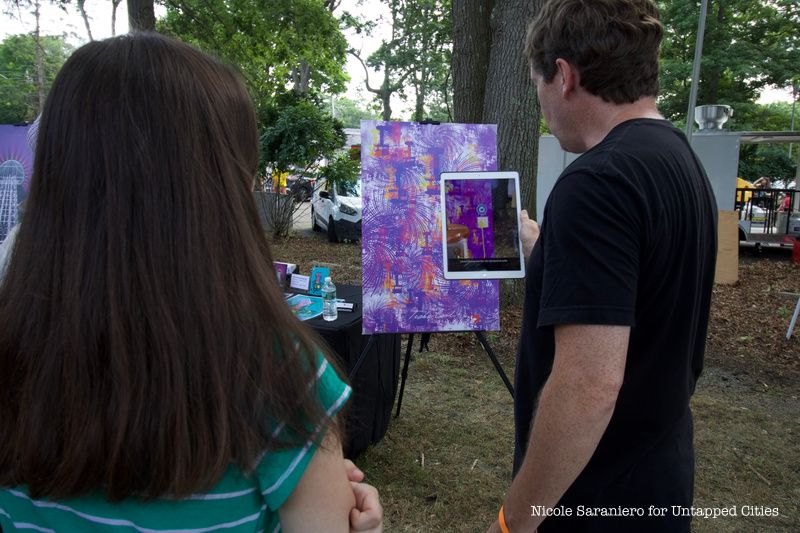
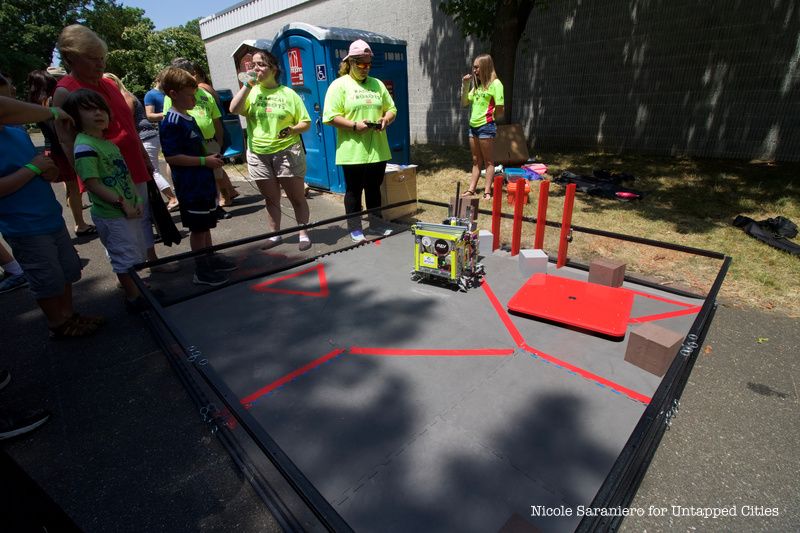
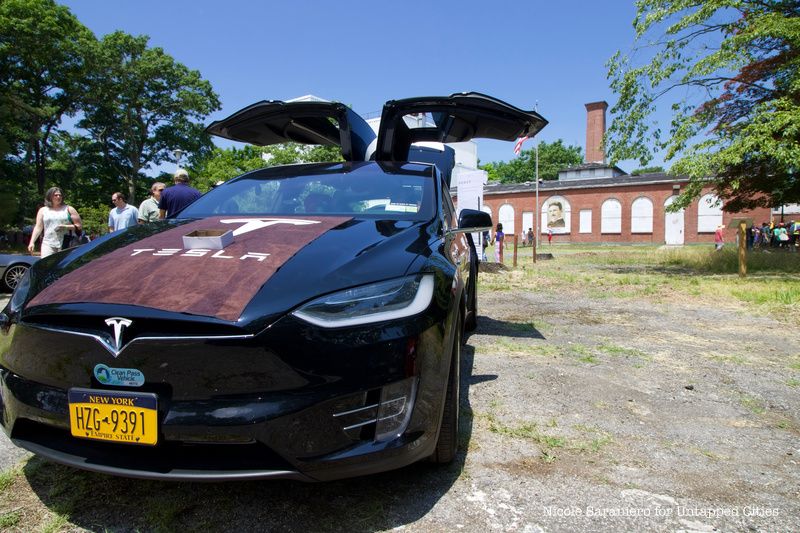
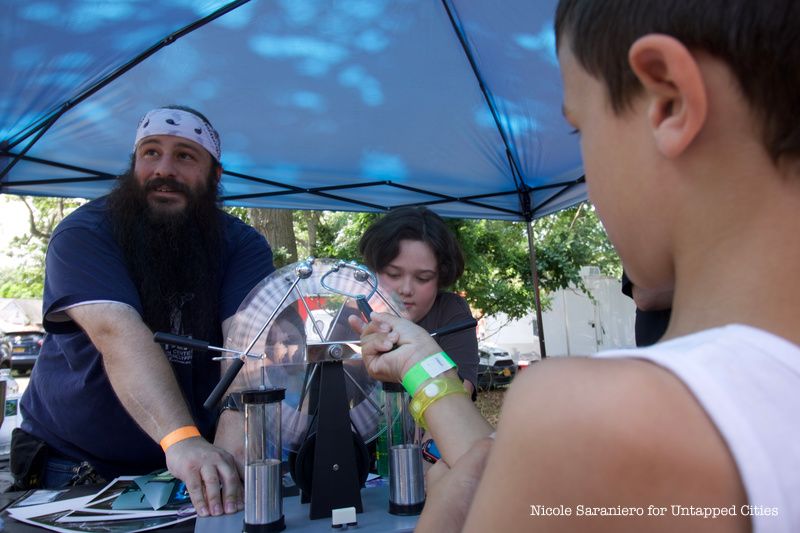
Next, check out 13 Lost Mansions of Long Island’s Gold Coast
Subscribe to our newsletter